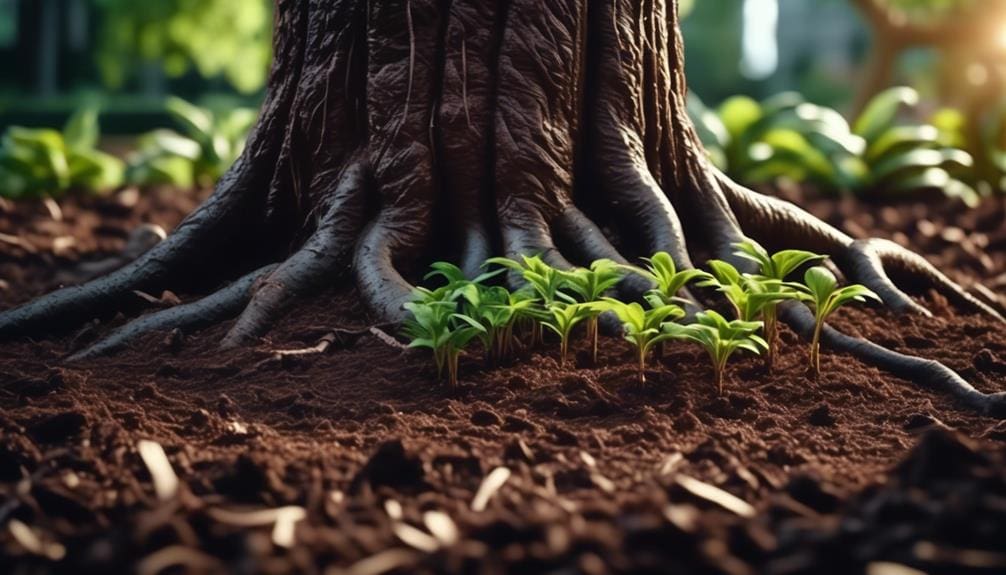Tree Health and Maintenance
Nurture Trees: 5 Vital Tips
As the morning sun casts a golden glow on the dew-kissed leaves of our old oak, it’s clear that trees are more than just a backdrop to our daily lives; they’re vital companions in our shared environment. We understand that nurturing these leafy giants is no small task, and it’s a responsibility we take seriously.
Let’s share five fundamental tips that can help anyone foster the health and longevity of their trees. We’ll start with selecting the right species for your specific region and move on to the intricacies of proper planting techniques. But that’s just the beginning.
Ensuring the vitality of trees requires a blend of knowledge and dedication, and we’re here to guide you through each step. As we uncover these essential practices together, we’ll equip you with the tools to not only sustain but also enhance the natural splendor of your green havens.
Join us as we explore how these tips can transform your approach to tree care and why they’re crucial for the trees you cherish.
Key Takeaways
- Select a suitable location for planting based on the tree’s mature size and hardiness zone
- Develop a maintenance schedule that includes regular watering, pruning, and mulching
- Conduct regular inspections to detect signs of distress, insect infestation, and environmental stress
- Prune trees strategically for health and safety, removing dead or diseased limbs and maintaining tree form
Understanding Tree Care Basics
To ensure the vitality and longevity of our trees, it’s crucial to grasp the fundamentals of tree care. This includes proper selection, planting, and maintenance strategies.
We must consider the plant’s mature size and select a location that prevents overcrowding, fostering a healthy root system. This means researching hardiness zones and avoiding proximity to power lines and other obstacles.
It’s also essential to plant the root ball at the correct depth and apply organic mulch to conserve water and regulate soil temperature. ISA Certified Arborists can offer tree care tips and help us choose the right species for our climate.
Regularly watering our trees, especially during dry spells, and knowing how to properly prune a tree are paramount to maintaining tree health.
Developing a Maintenance Schedule
Establishing a maintenance schedule tailored to our tree’s specific needs is essential for fostering robust growth and vitality. We must create a watering schedule that considers both the age of our trees and the surrounding environmental factors to ensure they’re properly hydrated. For new trees, especially during their first year, consistent watering supports critical root growth.
We’ll also schedule regular pruning to cut away any damaged or diseased branches, which is vital for maintaining tree health and an aesthetically pleasing shape. Incorporating mulch into our care routine will help retain moisture, suppress weeds, and nourish our trees.
We’re committed to routine inspections to catch any signs of distress early on. Our maintenance schedule will adapt seasonally, ensuring our mature trees receive the right care year-round.
Conducting Regular Inspections


Regular inspections are a cornerstone of tree care, allowing us to promptly spot any changes in bark firmness, leaf color, or branch condition that may signal distress or disease. When we conduct regular inspections, we’re actively safeguarding the health of our trees.
We check for broken branches, which can be entry points for pathogens, and assess for dead or damaged limbs that require pruning. It’s critical to maintain healthy trees by detecting early signs of insect infestation, such as holes in the bark or leaves.
We also inspect the tree’s crown for adequate cover and look for signs of environmental stress. Such diligence ensures our trees remain robust and thrive, free from preventable decline.
Pruning for Health and Safety
Pruning stands as a critical practice in maintaining tree health and ensuring public safety by removing potentially hazardous dead or diseased limbs. When we choose the right trees for our landscapes, we’re committing to their care. Essential to ensure a tree’s health and safety, strategic pruning not only clears away fallen leaves and debris but also addresses the structure that supports the tree’s long and healthy life.
We’ve learned that each tree needs specific attention to thrive—this includes understanding how and when to prune. It’s not about stripping a tree of its natural beauty; it’s about enhancing its form while securing our freedom from risks. Regularly assessing tree roots and branches helps us take care of potential problems before they escalate, keeping our green companions—and us—safe.
Optimizing Soil and Mulching Practices


While we address tree structure through pruning, it’s equally crucial to focus on the soil and mulching practices that lay the foundation for vigorous growth.
We must choose the right tree for the soil location to avoid overcrowding and ensure that our trees grow best.
When we plant trees, applying organic mulch around the base of the tree retains moisture and promotes health.
It’s vital we avoid mulch ‘volcanoes’; never pile mulch against the tree trunk. Instead, spread it around the tree to reduce compaction and conserve much water.
Conclusion
In conclusion, we’ve learned that nurturing trees requires a blend of knowledge and diligence.
By selecting the right trees, fostering diversity, and providing consistent care, we ensure their health.
Pruning and timely inspections prevent hazards, while optimal soil and mulching techniques deliver essential nutrients.
Let’s commit to these practices; our environment depends on the robust growth of these vital green assets.
Together, we can foster thriving ecosystems for future generations to enjoy.


Hello there! I’m Logan Foster, the green-thumbed social media marketer behind the vibrant world of 1800TreeGuy.com. With roots firmly planted in arboriculture, I’ve branched out to help clients cultivate their dream outdoor spaces, one leafy canopy at a time. My knack for nurturing nature is more than a profession—it’s a way of life.
When I’m not talking trees and teaching the art of arboreal care, you can find me cheering on the Bulldogs—my alma mater’s pride and my forever team. My environmental studies there didn’t just teach me about ecosystems; they instilled a lifelong passion for protecting our planet.
Off the clock, I’m an adventurer at heart. Whether it’s trekking the Appalachian trails, pedaling down a mountain path, or crafting guides to share the wonders of the wild, I’m happiest with soil under my nails and the sun on my face. And let’s not forget Yoda, my pug sidekick. He may not have mastered the art of stillness, but his joyful grins are my daily dose of happiness.
I’m all about making connections—between people and the great outdoors and between my clients and their ideal landscape visions. My approach is personal; every tree has a story, and every garden reflects its caretaker.
If you want to green your scene or share in my outdoor escapades, give me a shout on Instagram or Facebook. Let’s cultivate a conversation and grow a community rooted in a love for the lush life.







